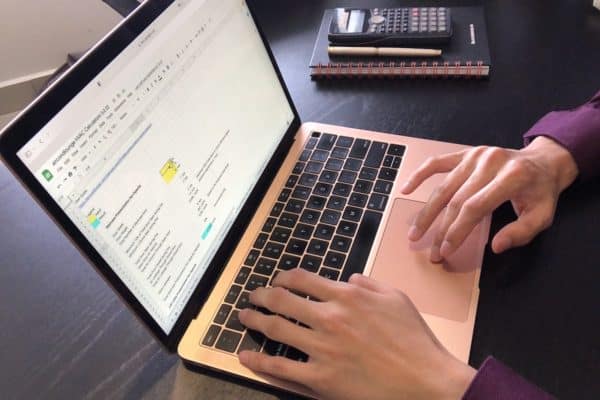How to Invest as an Engineer? (Basics of Investing)
Everybody wants to become an investor at some point in their lives. As an engineer, we often lack financial knowledge, let alone investing. So, how do you get started in investing as an engineer?
I graduated as a mechanical engineering degree holder. Like most people, I had no idea why I study mechanical engineering, let alone my career path. So, I went on to find a typical engineering job.
Back then, I was focusing on getting the highest possible salary as an engineer. After surveying several positions, I noticed that project engineers tend to earn more than design engineers and other mechanical engineering jobs. So, I applied for the job.
As a project engineer, I was earning around MYR3500 (~USD830) gross every month. At that time, it was a pretty decent salary for a fresh graduate (btw, I didn’t do any internship before). See the breakdown of salary in Malaysia.
I was hired for an upcoming project called KL Metropolis but it was delayed again and again, and eventually paused. So, I had nothing to do for a few months, just sitting inside the office watching YouTube videos all day long. Then, I came across the topic of investing.
I got hooked. I got very interested in investing. At that time, Warren Buffett is the icon of investing (until now as well). So, I started to watch videos of Warren Buffett and other famous investors on investing. That’s how I started my investing journey.
As an engineer, we often lack financial knowledge. Most of us are good in mathematics but it doesn’t mean that we are good at calculating revenue, income and other financial metrics associated with investing.
Fast forward today, I’ve been investing for more than 6 years. I had many losses but I also have great wins. If you don’t mind learning the basics of investing from an engineer, here is how you can get started on investing as an engineer.
What is Investing?
Investing is about growing the money you’ve saved in your bank account. Basically, leaving your money in your bank account is kind of an investment. Most banks will give you around 0.5-2% of interest per year depending on where you live.
For example, if you have MYR2000 in your bank saving account, a 2% interest rate means you’ll be getting MYR3.33 per month or MYR40 per year, neglecting compound interest.
However, as you can see, this kind of investment is not giving us a practical return. MYR3.33 can’t even get us a meal in Malaysia nowadays. So, to most investors, putting money in a bank account for a basic interest is not considered an investment.
Generally, people consider investing as when you purchase a house and rent it, buy shares from the stock market, sign up for mutual funds and ETFs and perhaps, cryptocurrencies.
Property Investment
Property investment is sometimes known as real estate investment. Basically, you borrow money from a bank to buy a house and then, you rent the house to other people. If the rental is more than what you need to pay back to the bank, you have an asset. Otherwise, it is a liability.
Asset is what puts money in your pocket while liability is what takes money out of your pocket.
Most people, especially the Chinese like myself, are taught to invest in property or real estate because the value of houses is always rising and it is true. However, there are a lot of risks associated with property investment.
In Malaysia, a 500 sqft apartment with 2 bedrooms can cost as much as 500,000 Ringgit Malaysia. It means that you may need to borrow around 450,000 from the bank. If the apartment becomes a liability, you can imagine how many years you need to work to pay off the money you borrow from the bank.
So, there is not much room for failure in property investment. If you know nothing about investing, I would not suggest you jump into property investment now.
There are many “property gurus” that teach you how to earn big money through property investment. However, there are many scams as well. So, be extra cautious when it comes to property investment.
Stock Investment
Stock investment is about you buying a small piece of a public listed company on the stock exchange. If the value of the public listed company rises, you can sell the shares that you’ve bought earlier at a higher price and earn the difference.
Most companies are private companies. A private company means that the company is fully owned by the founder and co-founder. If the company decided to go public, everyone (including me and you) can own a small percentage of the company by buying the shares that the company released.
To elaborate further, imagine you have a cake and it is fully owned by you. If you want to make the cake go public, you need to cut the cake into small pieces. Then, your friends can buy one or a few pieces of cake. Now, you and your friends own the entire cake together but at a different percentage depending on who has the most pieces of the cake.
The reason why companies go from private to public is that they need more money. They sell a certain percentage of their shares to the public to raise money. There are too many reasons why a company needs money.
Stock investment is a high liquidity investment. It means that you can turn your shares into cash in a relatively short period of time, usually within a week. Conversely, you can’t sell a house within a week.
I started my investing journey through stock investing. It allows me to do tests with a small amount of money first. Typically, you only need about MYR500 (~USD120) to get started.
Mutual Funds and ETFs
Mutual funds and ETFs are very similar to stock investing. While you need to do it yourself in stock investing, you can let a fund manager help you to invest your money in stocks through mutual funds.
On the other hand, ETFs are collections of stocks. So, you’ll be buying hundreds of stocks at once when you buy an ETF. It is the same as buying the S&P500 of the United States.
To make it simple, when you buy either a mutual fund or an ETF, you are essentially buying hundreds of stocks associated with the mutual fund or the ETF. It’s known as diversification. You don’t put all your money into one basket.
However, you need to pay fees to the fund manager when you sign up for a mutual fund.
Historically speaking, most mutual funds and ETFs yield a return of around 8% per year. Your MYR2000 will become MYR2160 next year. It is not very significant but it is better than leaving your money in the bank.
Mutual funds and ETFs are suitable for people who don’t want to spend time studying public companies and the stock market. If you ask me, engineers tend to have better analytic skills and thus, should not be relying on other people when it comes to investing.
When I first started to invest, I did put some of my money in a few mutual funds. But, I withdrew and sold my mutual funds a year later because the return is not as attractive as individual stocks.
How to Get Started in Investing?
The first step in investing is to have the money first (obviously). So, you’ll need to do two things; a) increase your income and b) save as much money as you practically can.
As a fresh graduate, your monthly salary is most likely only able to cover your basic needs such as accommodation, transport, household, debt repayment and entertainment. Hence, you need to work hard and learn as much as possible in order to increase your income.
Becoming a professional investor is the ultimate goal. However, it doesn’t come quick, let alone easy.
In addition, before your income can cover your living expenses, you have nothing to save. However, you can review your lifestyle to see if you are overspending and which expenses you can cut in order to save more money.
Set a saving goal for yourself. A solid 3-month salary worth of money should be saved in your bank account as an emergency fund. The last thing we want is to give up our investment at a loss due to emergency situations where we need the money.
“Rule number one is don’t lose your money. Rule number two is don’t forget rule number one.”
Warren Buffett
Once you complete your emergency fund, aim to save one more month of your salary for investing. Meanwhile, start to read books, videos and articles about investing. For books, I would suggest the following if you can get from Amazon:
Rich Dad Poor Dad by Robert Kiyosaki is a remarkable book. It gives me a new perspective on money and the world of finance as well as investing. Meanwhile, Rule One Investing by Phil Town is a practical book on stock investing.
I took me about 3 years to save up my emergency fund and buy my very first stock. You can do it better because I spent about 30% of my monthly income in debt repayment on my fancy new car. I don’t regret my decision though.
When you first start to invest, it is extremely important that you stick to the plan and delay your gratification. It is very hard to save back the money you spent because you are not earning very much as a junior engineer.
Most people are in a hurry when it comes to investing and they ended up losing all their money due to the fear of missing out (FOMO). FOMO is real and it hits me all the time. However, we need to stick to the plan!
Final Thought
Do not believe that investing is something that only financial people can do. We, engineers, naturally have good analytic skills, interpretation skills and logical thinking. So, make sure you utilize those skills to become a good investor.
I have many practical investing procedures to share with you but not in this post. This post is about getting started and it is all about saving money and managing your personal finance. When you’re ready to invest, be sure to check out my other articles to learn more about investing.
If you have anything to add (or ask) about this topic, leave a comment down below!









